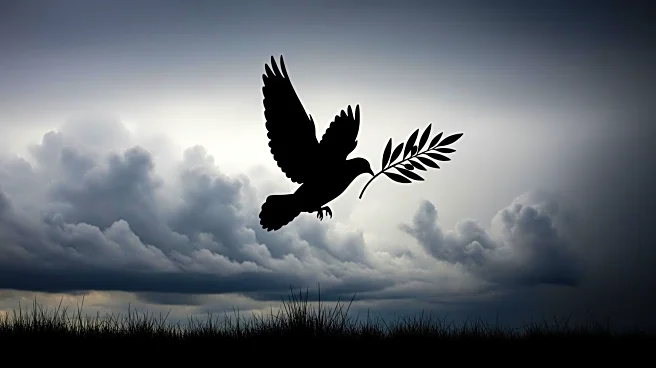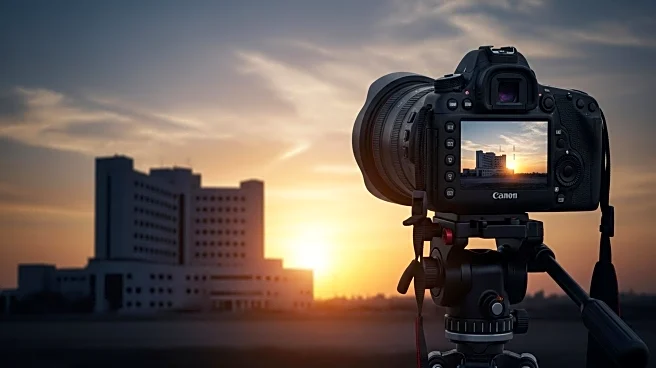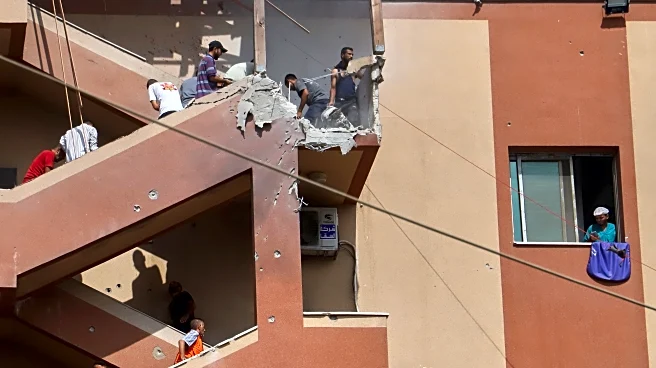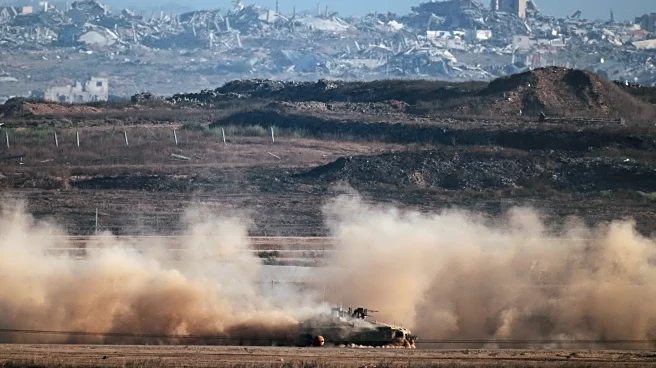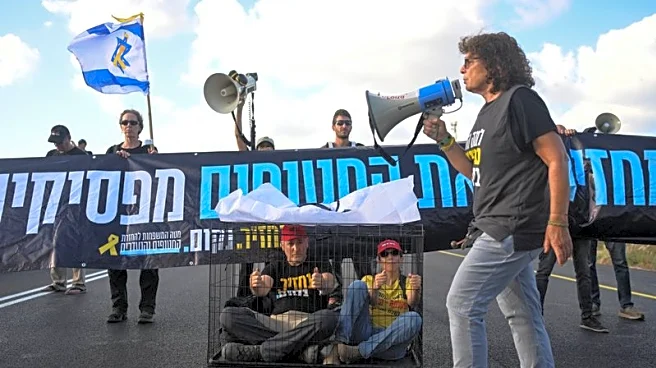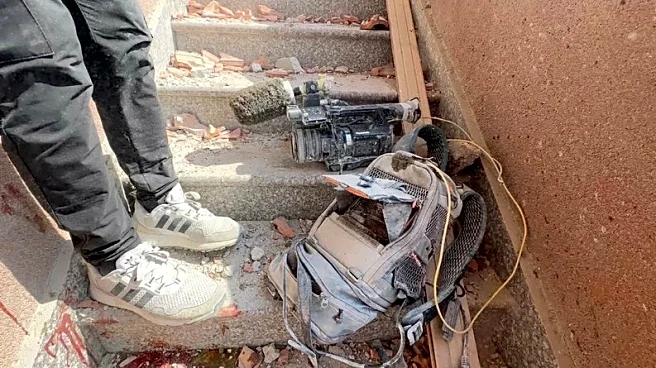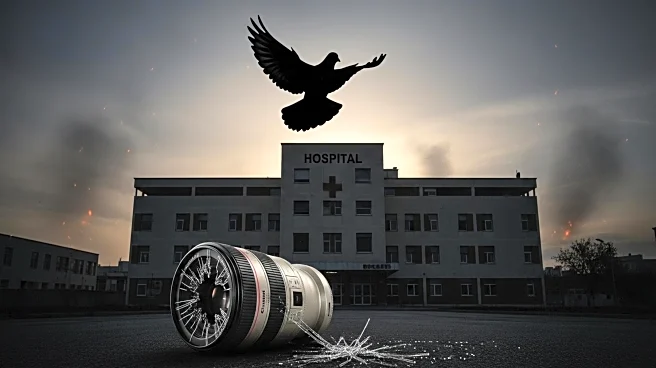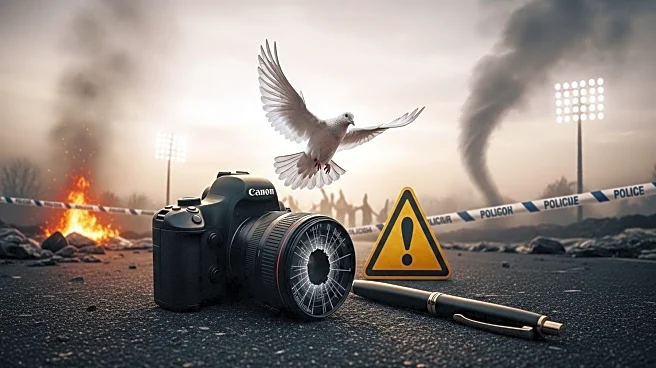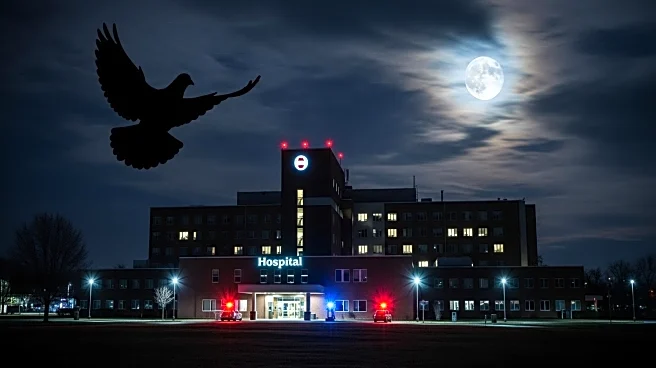What's Happening?
Mariam Dagga, a visual journalist freelancing for The Associated Press, was killed in an Israeli military strike on Nasser Hospital in the Gaza Strip. The attack resulted in the deaths of 22 individuals, including five reporters. The Israeli military claimed the target was a Hamas surveillance camera, but witnesses and health officials reported that the strike killed a Reuters cameraman and another unnamed person. Dagga had been documenting the experiences of displaced Palestinians and the medical staff treating them. Her final images captured the damaged stairwell of the hospital moments before the second strike.
Why It's Important?
The incident highlights the dangers faced by journalists in conflict zones and raises questions about the targeting of civilian areas during military operations. The death of Dagga and other journalists underscores the risks involved in reporting from war-torn regions, impacting the flow of information and the ability to document human rights violations. The strike on a hospital, a civilian facility, may provoke international scrutiny and calls for accountability, affecting diplomatic relations and humanitarian efforts in the region.
What's Next?
The United Nations Security Council may address the incident, as Algeria's ambassador has already brought attention to Dagga's death. This could lead to discussions on the protection of journalists and civilians in conflict zones. The international community might increase pressure on Israel to justify its military actions and ensure compliance with international humanitarian law. Advocacy groups may push for stronger measures to safeguard journalists and civilians in war zones.
Beyond the Headlines
Dagga's death brings to light the ethical challenges of war reporting, including the balance between documenting conflict and ensuring personal safety. It also raises cultural and emotional dimensions, as seen in Dagga's letter to her son, reflecting the personal sacrifices made by journalists. The incident may influence future policies on media coverage in conflict areas, emphasizing the need for protective measures and ethical guidelines.
